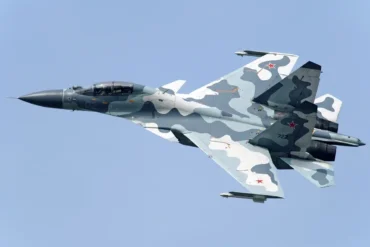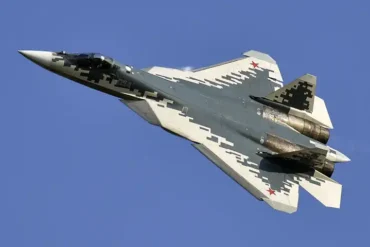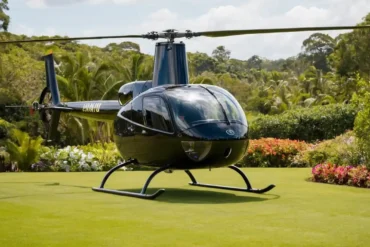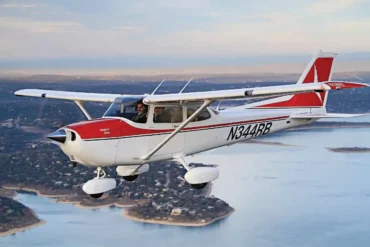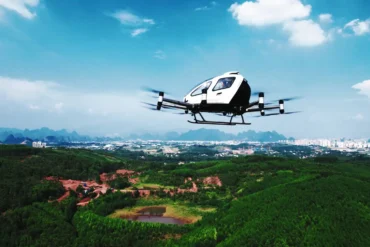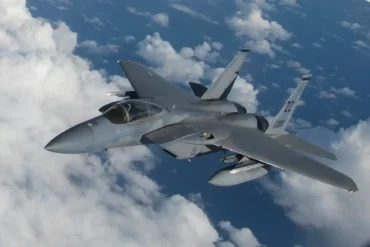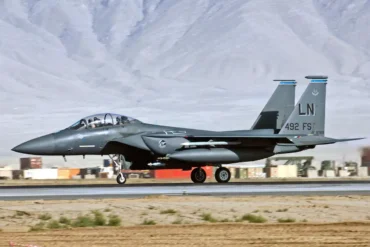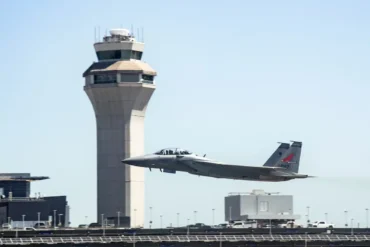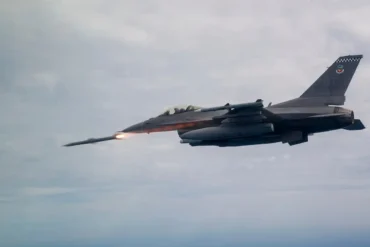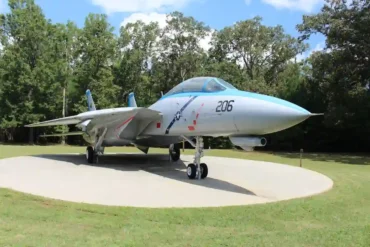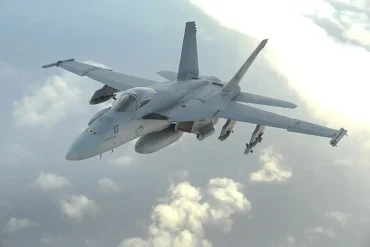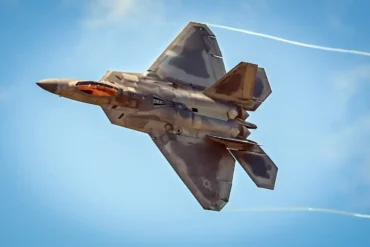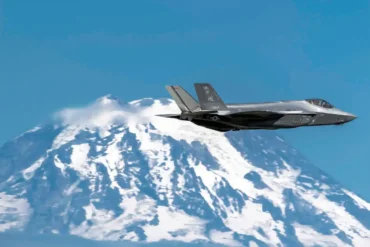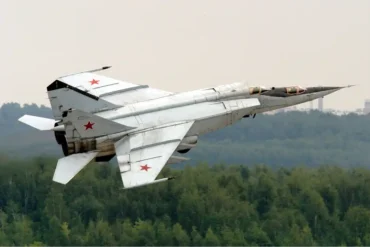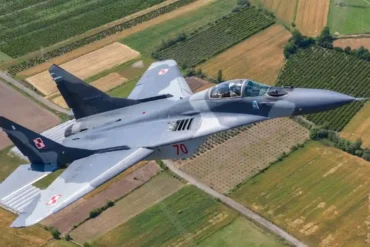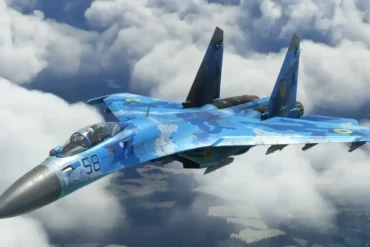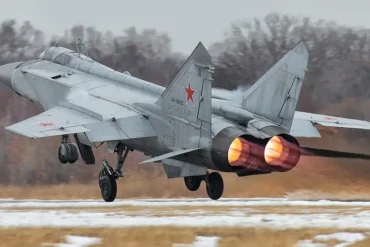The Sukhoi Su-35 is one of the most advanced multirole fighter aircraft developed by Sukhoi, a leading Russian aircraft manufacturer. This supermaneuverable, 4.5 generation air superiority fighter is known for its impressive capabilities, high-performance engines, and advanced avionics. As a result, it is a preferred choice for many countries seeking cutting-edge technology for their air forces. However, when considering its purchase, one of the key factors to evaluate is its cost. The price of the Su-35 varies based on several factors such as export variants, technological features, and the purchasing country’s specific needs.
Overview of the Sukhoi Su-35
The Su-35, also known by its NATO reporting name Flanker-E/M, is a single-seat, twin-engine fighter derived from the Su-27. The aircraft is capable of superlative maneuvers, including high-angle-of-attack and supercruise, which makes it an incredibly effective air superiority fighter. Its design incorporates advanced features such as thrust-vectoring engines, canards, and active electronically scanned array (AESA) radar, all of which contribute to its remarkable agility and performance. These characteristics have made the Su-35 a formidable competitor on the international defense market.
Sukhoi Su-35 Specifications
- Wingspan: 15.3 m (50 ft 2 in)
- Length: 21.9 m (71 ft 10 in)
- Height: 5.9 m (19 ft 4 in)
- Empty Weight: 19,000 kg (41,888 lb)
- Gross Weight: 25,300 kg (55,777 lb)
- Maximum Takeoff Weight: 34,500 kg (76,059 lb)
- Fuel Capacity: 11,500 kg (25,400 lb) internal
- Range: 3,600 km (2,200 mi, 1,900 nmi) at altitude, 1,580 km (982 mi) at sea level
- Maximum Speed: Mach 2.25 (2,400 km/h or 1,490 mph at altitude), Mach 1.13 (1,400 km/h or 870 mph at sea level)
- Radar: Irbis-E Passive Electronically Scanned Array Radar
- Climb Rate: 280 m/s (55,000 ft/min)
- Crew: 1
- Engine: 2 × Saturn AL-41F1S afterburning turbofan engines
These remarkable specifications ensure that the Su-35 is well-equipped to engage in both air-to-air and air-to-ground combat, providing unmatched versatility and reliability.
Factors Affecting the Cost of the Su-35
The cost of the Sukhoi Su-35 depends on several factors, ranging from its role in different air forces to the specific features requested by the purchasing country. Key factors influencing the price include:
1. Export vs. Domestic Purchases
While Russia’s Air Force has been the primary customer for the Su-35, several other countries have acquired the aircraft, such as China, Egypt, and Indonesia. The price for these export variants can vary significantly based on agreements between the Russian government and the buyer, as well as logistical and technological considerations.
- Russian Air Force (Su-35S): The Su-35 purchased by the Russian Air Force is priced between $55 million to $85 million per unit, depending on specific requirements and order size. The lower end of this range typically represents bulk purchases or deals with limited customization.
- Export Customers:
- China (Su-35SK): The Su-35SK variant sold to China costs approximately $83–$85 million per unit.
- Egypt (Su-35SE): Egypt’s version, the Su-35SE, is priced at about $75 million per unit.
- Indonesia (Su-35): Indonesia’s Su-35 aircraft are priced lower, ranging from $65–$70 million per unit.
2. Technological Advancements
The advanced features integrated into the Su-35 make it a more expensive option compared to earlier models like the Su-30MKI. These enhancements include:
- Thrust-Vectoring Engines: These engines allow for superior agility and maneuverability, particularly during aerial dogfights. The Su-35’s engines are capable of producing 137.3 kN (30,900 lbf) thrust with afterburner, providing exceptional performance and allowing the aircraft to reach Mach 2.25 at altitude.
- Radar and Avionics: The Su-35 features the Irbis-E radar, a passive electronically scanned array that provides high-performance tracking capabilities and ensures the aircraft’s effectiveness in both offensive and defensive operations. These radar and avionics systems significantly increase the aircraft’s price due to their sophisticated nature.
3. Customization and Logistics
Different countries may request specific upgrades or custom features for their Su-35 aircraft, impacting the overall price. This could include:
- Extended Range: Countries with vast geographical territories may seek additional fuel capacity or external fuel tanks to increase the operational range of the Su-35.
- Weapons Integration: Customizing the aircraft with specific weapon systems or equipment may increase the overall cost.
- Training and Maintenance: The price can also vary based on the level of training and maintenance support provided by the manufacturer. Logistics and spare parts packages are often factored into the total cost of an export deal.
4. Regional Pricing Discrepancies
Export prices may differ based on regional agreements and the nature of political and defense relations between Russia and the purchasing country. The cost of the Su-35 for neighboring countries may be subsidized, or there may be incentives to encourage trade and military cooperation.
For instance, the Su-35 purchased by China is priced higher compared to those purchased by Indonesia due to geopolitical considerations and the strategic importance of the aircraft for the respective nations’ military plans.
The Cost of Operating the Su-35
While the purchase price of the Sukhoi Su-35 is substantial, it is equally important to consider its operational costs. These costs involve:
- Maintenance: The Su-35’s advanced engines and avionics require frequent maintenance, which can be expensive. Spare parts and specialized repair services must be sourced either from Russia or authorized third-party contractors.
- Fuel Consumption: The fuel capacity of the Su-35 is 11,500 kg, and while it offers a range of 3,600 km at altitude, its high-speed performance means that fuel consumption can be considerable during intensive operations.
- Hourly Operating Costs: The operating cost of the Su-35 is typically measured in cost per flying hour, which ranges between $15,000 to $20,000 depending on the location, mission complexity, and maintenance requirements.
These operational expenses must be taken into account when evaluating the true cost of owning and operating a fleet of Su-35 fighter jets.
Is the Su-35 Worth the Investment?
Given the advanced capabilities of the Sukhoi Su-35, the price tag may seem hefty for many countries. However, the Su-35 offers a range of benefits that justify its cost. It combines high-speed performance, superb maneuverability, long-range combat capabilities, and cutting-edge radar systems, making it a highly effective air superiority fighter. When compared to other aircraft in its class, such as the F-15E Strike Eagle or the Eurofighter Typhoon, the Su-35’s price is competitive, especially considering its impressive thrust-to-weight ratio and supercruise capabilities.
Countries looking to bolster their air forces with next-generation fighter aircraft will find the Su-35 to be an excellent choice, offering a cost-effective solution for modernizing their fleets.
Conclusion
The cost of a Sukhoi Su-35 varies significantly depending on the purchasing nation and specific requirements. Generally, the price for a new Su-35 ranges from $55 million to $85 million, with export prices often higher due to customization, advanced technology, and logistics support. Despite the high purchase cost, the Su-35 offers exceptional performance and value, making it an attractive option for countries seeking to enhance their air forces with cutting-edge technology and superior combat capabilities.
By weighing the upfront cost alongside long-term operational benefits, countries can make informed decisions about investing in this high-performance fighter jet that offers unmatched versatility and technological superiority.

